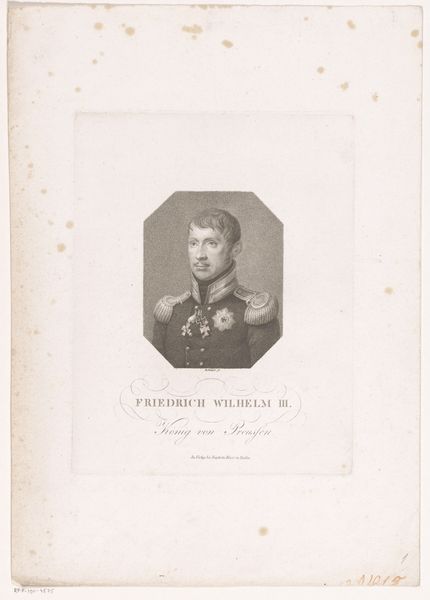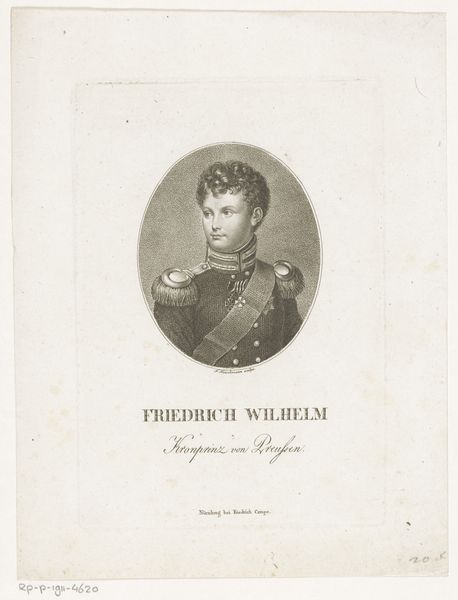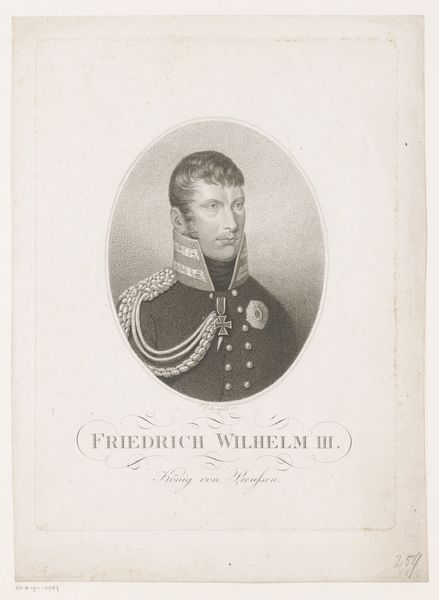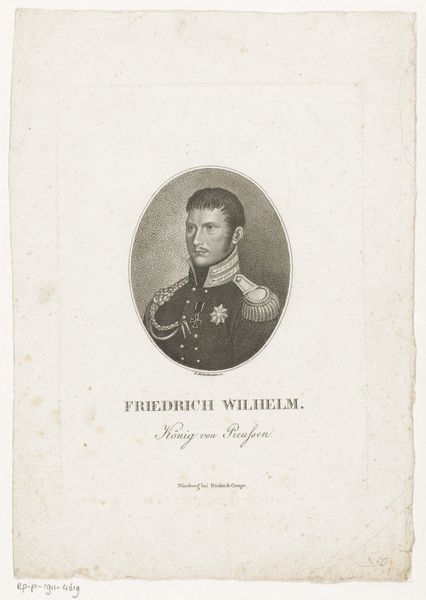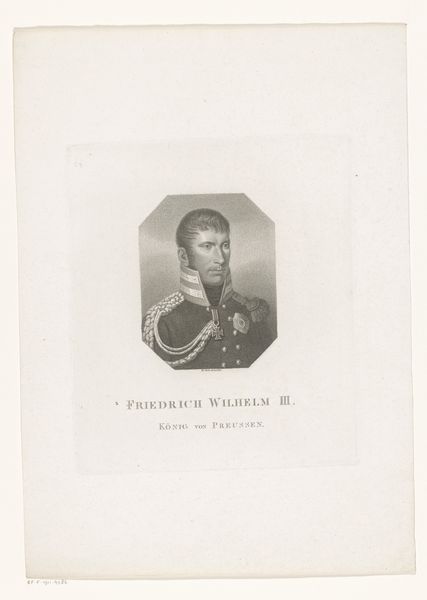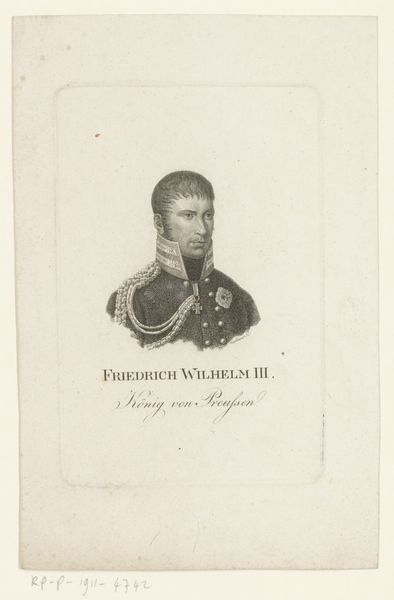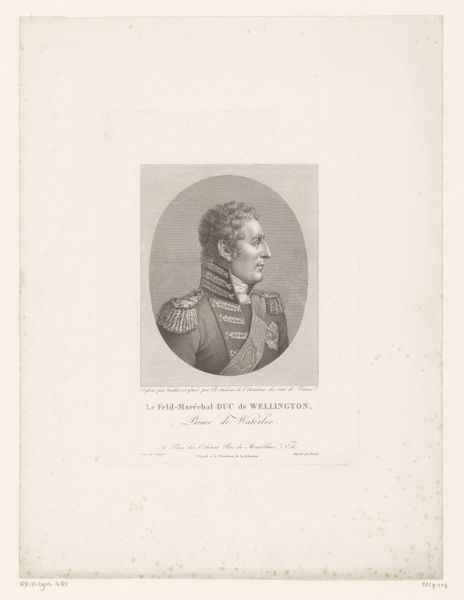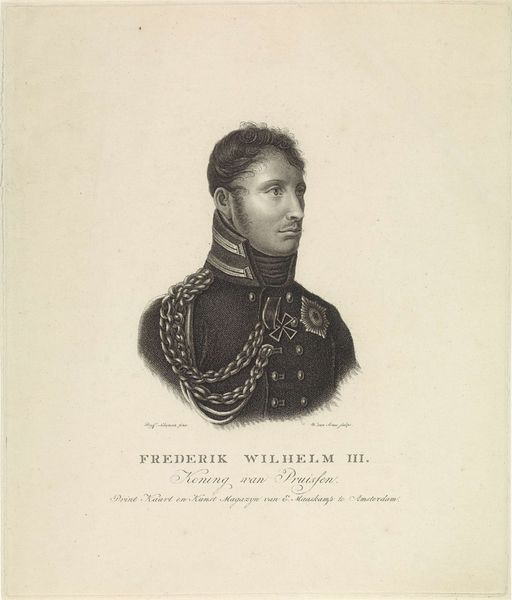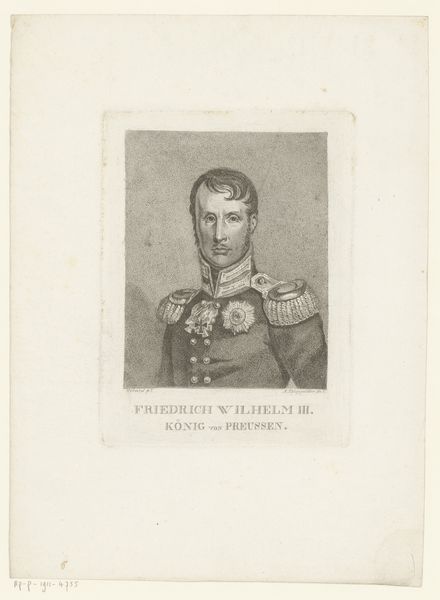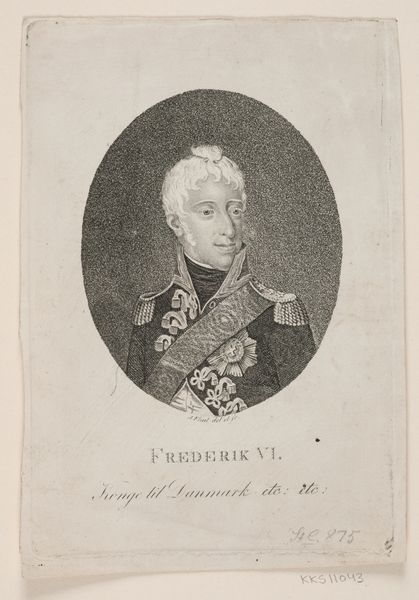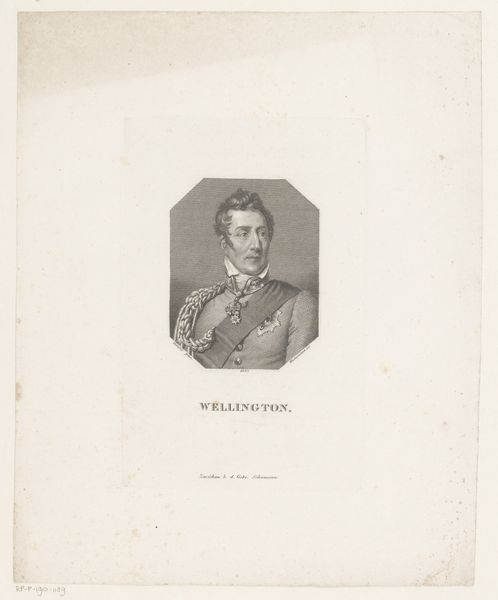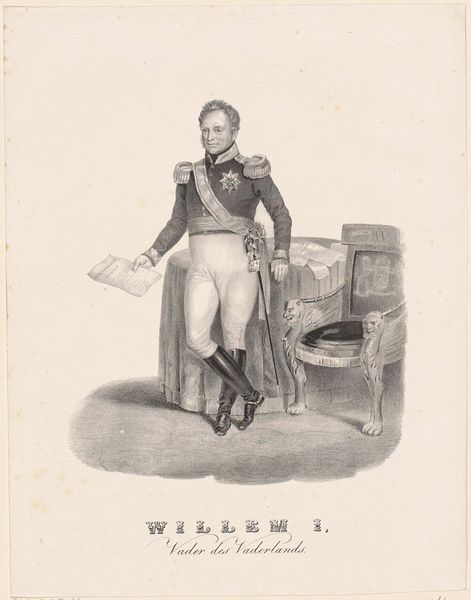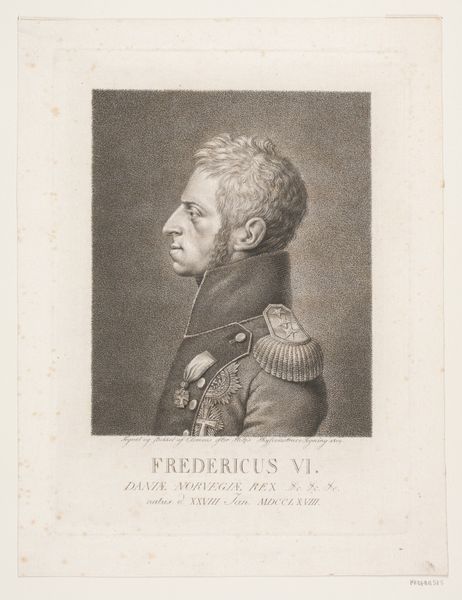
Portret van Friedrich Wilhelm IV als kroonprins van Pruisen c. 1805 - 1825
0:00
0:00
print, engraving
#
portrait
#
neoclacissism
#
aged paper
# print
#
old engraving style
#
classical-realism
#
history-painting
#
engraving
Dimensions: height 202 mm, width 159 mm
Copyright: Rijks Museum: Open Domain
Curator: This engraving, titled "Portret van Friedrich Wilhelm IV als kroonprins van Pruisen," dating from around 1805 to 1825, is a Neoclassical portrait currently housed in the Rijksmuseum. The medium is an aged print, crafted with an old engraving style. Editor: My immediate reaction is a sense of rigid formality. The octagonal frame and sharp lines of his military uniform box him in, visually reflecting the constraints of inherited power. It feels austere. Curator: The material execution of the engraving, with its meticulous lines and shading, is paramount. The labour involved in producing such detail, the very process of transferring the image onto a copper plate and then printing it repeatedly, speaks to the function of image production for disseminating power during this era. Each print represents a claim to authority. Editor: Exactly. And what claims are being made? Consider the historical backdrop: Friedrich Wilhelm IV's role in suppressing liberal movements later in his reign. Even as a young man here, his presentation—the closed-off posture, the elevated gaze—symbolises a ruler distanced from his people. The print, en masse, would have acted as a tool to normalise hierarchy. Curator: But also as a consumer object! This wasn't just about spreading propaganda, it was about creating a market. Look at the paper itself: it’s aged, a testament to its survival as a commodity. The very material invites us to consider its exchange value then and its art-historical value now. Editor: True, the neoclassical style, with its idealized form, presents power through the guise of rationality, order, even inevitability. This aesthetic reinforces a social order while obscuring its underlying inequalities. Whose stories are being silenced or co-opted by this very image? Curator: These questions open important discussions. By focusing on the print as a physical object shaped by production, labour, and market forces, we can reveal broader narratives about class, social mobility and art production and consumption itself. Editor: Absolutely. It prompts us to consider who possessed this portrait, what contexts it circulated within, and what social relations it ultimately reinforced or challenged. Looking critically offers ways into deeper discussions of history and power.
Comments
No comments
Be the first to comment and join the conversation on the ultimate creative platform.
